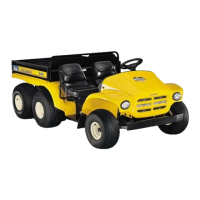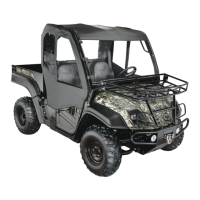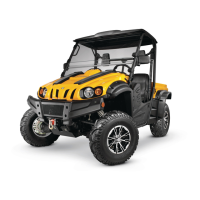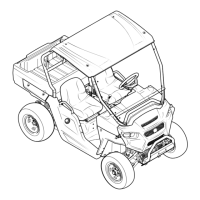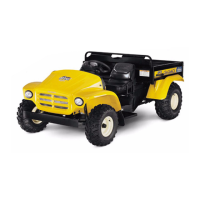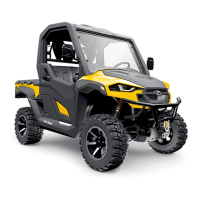Chapter 4 - Front Suspension and steering
131
7. If the camber is out of adjustment, and the ride
height is correct, there are worn or damaged
parts in the front suspension. The primary sus-
pects are:
• Worn control arm bushings
• Worn ball joints
• Loose wheel bearing
• Bent control arm
• Collision damage to frame
• False reading from bent or out-of-true rim
Inspect these parts as described in the INSPECTION
section of this chapter to identify the specific problem.
Toe angle
8. After the camber is adjusted or confirmed to be
correct, the toe angle can be checked and
adjusted if necessary. See Figure 4.16.
What is toe angle?:
Toe angle describes the amount that the wheels
point in toward each-other or out away from
each-other when viewed from the top of the
vehicle.
• Think of toe-in as being a pigeon-toed person,
with their feet positioned so that their toes are
closer together than your heels.
• Think of toe-out as a person waddling around
like Charlie Chaplin, with their toes outward and
their heels together.
How is toe angle expressed?:
Toe is generally expressed in fractions of an
inch, or in millimeters.
Figure 4.16
Toe-in
Toe-out
Toe angle reacts to braking forces:
Under braking, the front wheels tend to toe-out,
because the contact patch of the tires lies out-
board of the axis established by drawing an
imaginary line between the two ball joints. This
line represents a virtual king-pin around which
the wheels rotate with steering action. When
drag (braking) is applied outboard of this line, it
tends to drag the wheels back, bringing the toe
out.
Toe angle reacts to driving forces:
In four-wheel drive, the front wheels tend to toe-
in under load, because the contact patch of the
tires lies out-board of the axis established by
drawing an imaginary line between the upper
and lower ball joints. This line represents a vir-
tual king-pin around which the wheels rotate with
steering action. When drive force is applied out-
board of this line, it tends to drive the wheels for-
ward, bringing the toe in.
To measure toe angle:
NOTE: There should be between 1/8” to 1/4”
(3.2-6.4mm) toe-in between the two front
wheels.
9. A string (or straight-edge) that just touches the
outer edge of the tire side-wall, at the height of
the wheel’s hub would be parallel to the outer
frame channel at a toe angle of zero.
See Figure 4.17.
Figure 4.17
String just touching
of the hub
the sidewalls at
the center height
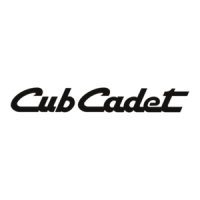
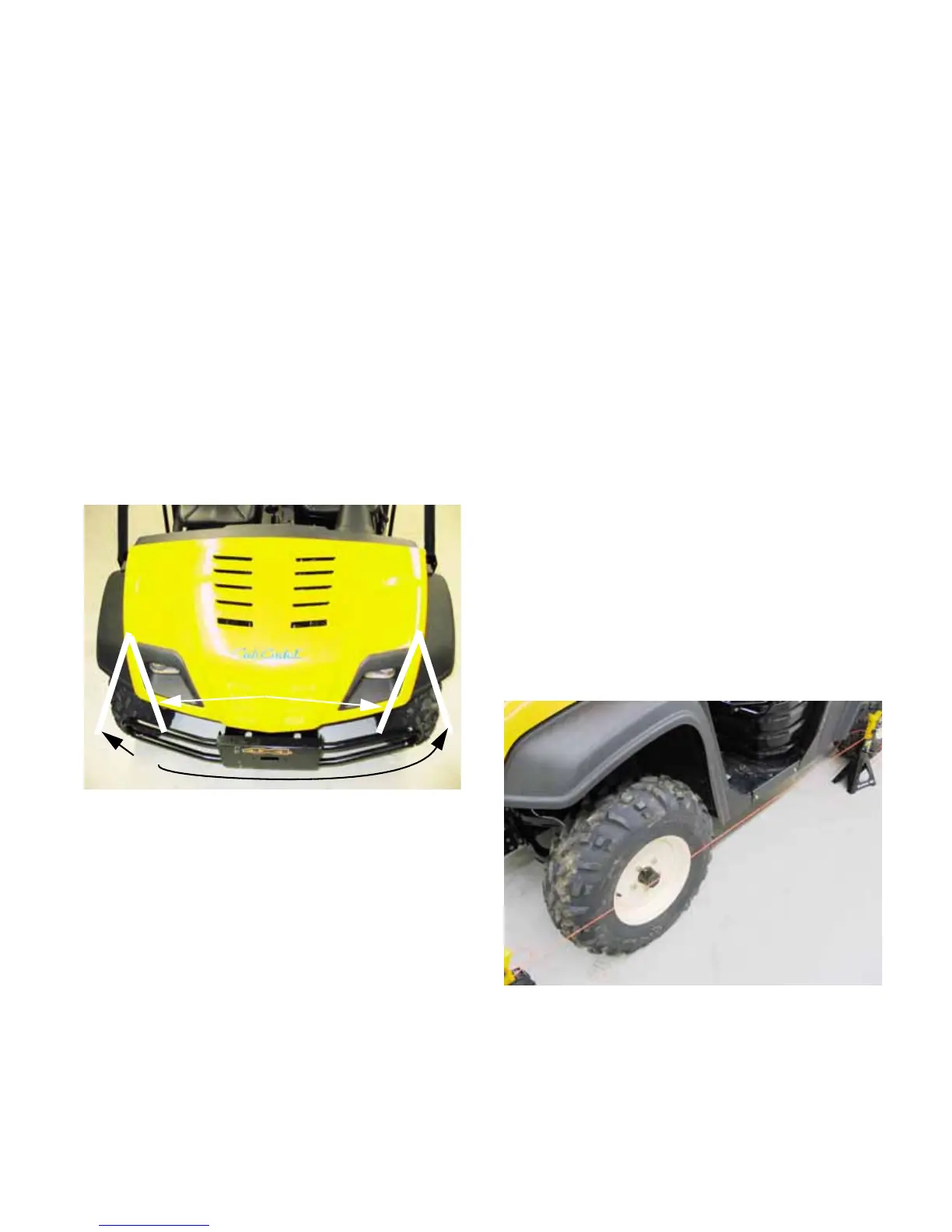